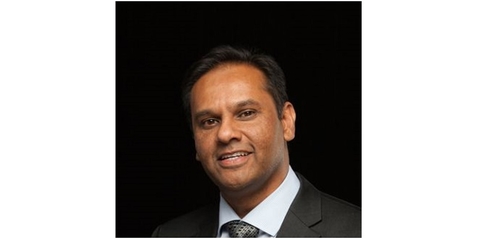CenturyLink has begun a field trial of a virtualized 10G-PON solution, reflecting the service provider’s move to begin virtualizing its last-mile FTTH access network.
For the trial, CenturyLink is leveraging Adtran’s virtualized OTL 10G-PON solution to create a simplified service delivery platform that can leverage a wide range of next-generation access technologies for wireline or mobile connectivity, accelerating the path to SD-Access.
Aamir Hussain, CTO of CenturyLink, told FierceTelecom that the service provider needs to continue to ramp up its respective speed profile to stay on pace with cable.
RELATED: CenturyLink’s Post: Cable’s 1 Gbps, aggressive pricing drove 65K Q2 broadband loss

“It’s all driven by speed and I have to provide at least 1 Gbps or higher next year,” Hussain said. “We already provide a gig, but having come from the cable world I know where cable is going to go so the next offering should be 2 Gbps."
The service provider already has a sizable FTTH base of 1.5 million customer sites in its network that it can build upon to test and attract potential users of the higher speeds when ready. It is currently testing a mix of XGS-PON and NG-PON2 equipment.
“We have 1.5 million homes that are built on GPON and from there we are going 10G-PON followed by XGS-PON and NG-PON2, and we have all of these things in our labs running,” Hussain said. “Our strategy is not to go down the legacy path where you take network infrastructure and work with Ericsson and Telcordia and that’s why we use one of the virtualized versions of 10G-PON from Adtran and offer it to our customers to learn how we scale it into next year.”
Evolving PON path
Like AT&T, CenturyLink is keen on following an evolutionary path to NG-PON2. After 10G-PON, the service provider will migrate to XGS-PON and finally NG-PON2 as needs dictate.
This is in contrast to the approach Verizon appears to be taking with a dedication to bypassing the other elements and going directly to NG-PON2.
Hussain said the migration path will allow CenturyLink to take advantage of virtualized SD-access equipment today.
“We need to control it through software and that’s why we are taking more of a migration path than just jumping to NG-PON2 and not doing anything in between,” Hussain said. “NG-PON2 will full software orchestration is not available.”
At this point for 10G-PON, CenturyLink will soon begin field trials with customers and then it will begin developing a list of best practices to manage the services.
“For 10G-PON, we are in first office trials,” Hussain said. “We have a couple of customers getting service from us and over time we have to build methods and procedures, operational elements, and to scale it you have to monitor and alarm.”
Given the amount of speed being 10G, the likely applications will be initially business and then consumer. The service provider would also consider selling it as a wholesale service.
“Applications could be business initially and then consumer,” Hussain said. “We have not decided on whether we want to wholesale PON infrastructure yet, but at the end of the day it’s access and access that’s software controllable you can sell to anybody.”
Tying in CORD strategy
A big part of CenturyLink’s migration to 10G-PON ties in with its Central Office Re-architected as a Datacenter (CORD) design. CORD combines NFV and SDN-based software to improve elasticity and bring data center economics and cloud agility to the telco’s CO.
CenturyLink has already applied CORD for its design to DSL networks as part of a broader effort to migrate to a software-based network architecture. CORD will give CenturyLink a common architecture for any type of last-mile network, whether that’s copper-based DSL or fiber-based GPON.
RELATED: CenturyLink says CORD will reduce costs, increase broadband response times
Leveraging the Adtran Mosaic platform will help CenturyLink reduce operating costs through the economies of data center architectures and automate networks as it looks to offer 10G services and beyond.
“We are building CORD,” Hussain said. “It’s a process because to put things in a central office, you have to address NEBS compliance and we have to consolidate a lot of legacy infrastructure.”
He added, “we’re dedicated to building edge compute platforms because that’s where most businesses will benefit from the depth and reach of our network.”
It appears that CenturyLink and fellow telco AT&T aren’t the only service providers in the process of deploying CORD. IHS found in its latest Routing, NFV, and Packet-Optical Strategies Global Service Provider Survey that 70% of respondents plan to deploy CORD in their smart COs.
